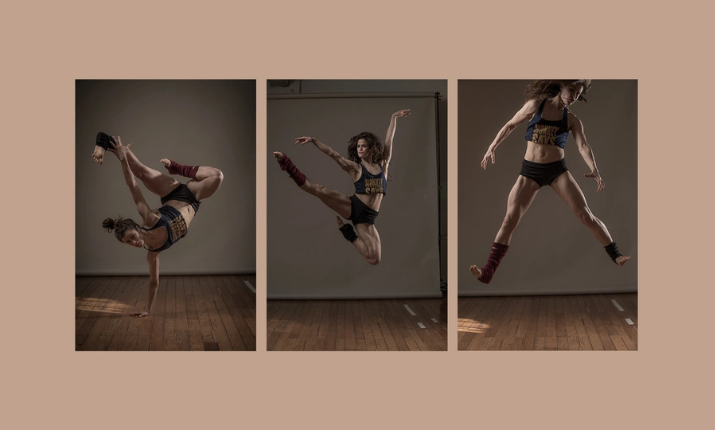My MEAA story: Jana Castillo

A dancer and choreographer, Jana Castillo has autism and 10 years ago was diagnosed with the movement disorder dystonia. She has been involved in the Dancers Australia campaign.
I first saw Play School live when I was 3½ and was mesmerised with how the people up there under those bright lights could be making so many people feel joy. I just remember looking down at the audience and being like, wow, that’s what I want to do. I was hooked and I found what I wanted to do.
My career thus far has ranged from classical ballet, music videos, contemporary dance, to showgirl, flying above orchestras to being a stunt woman, motion capture actor to pro cheerleader. I’ve travelled the world with my dancing and love working for this industry and feeling like I’m part of a community.
Unfortunately, it hasn’t been always sunshine and rainbows, there are some downsides to the industry. Countless times I have witnessed people being taken advantage of, being made to work through serious injury, being threatened with the idea that there are hundreds of people just waiting to walk into your job.
I first became aware of MEAA when I was doing a job that cancelled at the very last minute and just expected us to take it on the chin. There was one person in the company who happened to be in the union, she went to the MEAA and they represented us and the big company came to the table financially.
I believe to have a sustainable career you need support, I’m a really big advocate of that. I’ve witnessed countless times where dancers didn’t speak up for themselves, I've reflected upon this and wondered if there is any correlation to the fact that dancers spend so much time being mute when training that somehow, we haven’t learnt how to use our voices.
I joined MEAA to not only receive support for myself but to be able to support others so we can all have a more sustainable career.
I have autism and about 10 years ago, when I was 25, I got dystonia, which is a movement disorder that causes unwanted movements, I’ve had to learn how to manage it. I fought all the way through my career, to work in able-bodied spaces. So, I’m really, really passionate about dancers living with disability, getting as much support as they can.
More recently, I’ve been involved in the new campaign for Dancers Australia. I thought that sounded like a really nice opportunity to connect with other dancers. I also feel like I’ve been in the industry long enough to enable me to be a reliable advocate, particularly for younger dancers. I thought it would be a good opportunity for me to really understand more about what’s going on behind the scenes, more of our rights, so I can share that with others. I would have loved it when I was going through my university training if someone who was working in the industry came to us and said, ‘hey guys, not everybody’s going to become a company dancer so here’s what you need to know about how you can make a sustainable career out of this. And you’re not the only person going through this’.
We all need our network of people. I think when you’re a part of the collective, it enables you to surrender into support a bit more, which helps to take away the feeling of just battling through on your own. This industry can be challenging but it can also be filled with real magic. Through MEAA I want to support people to have a sustainable, enjoyable, and enriching careers.